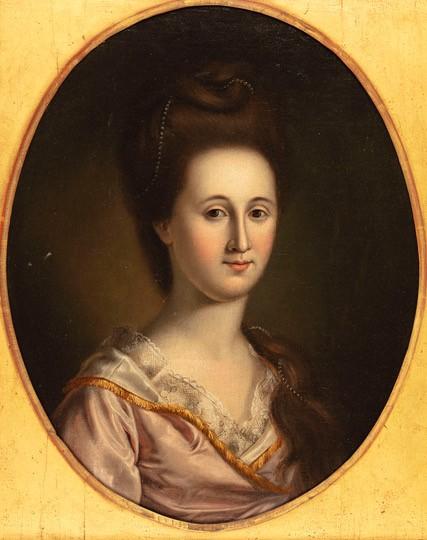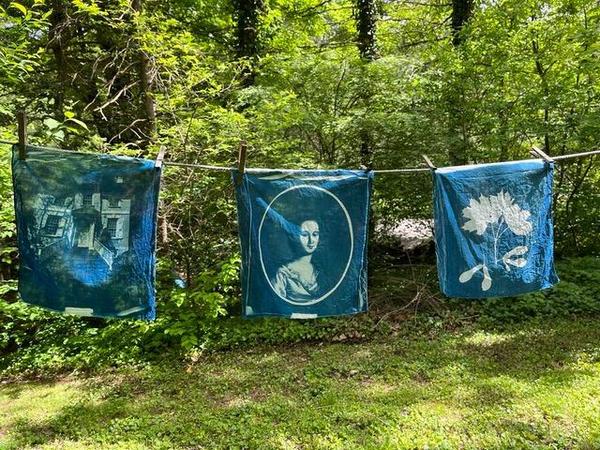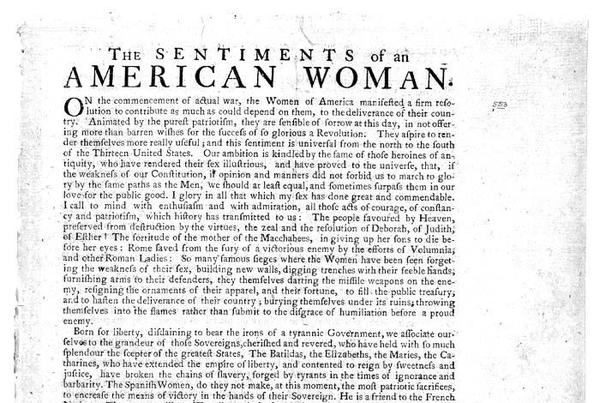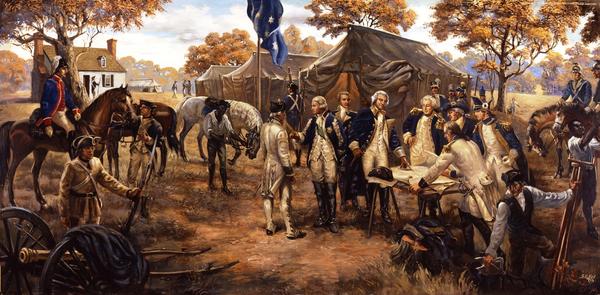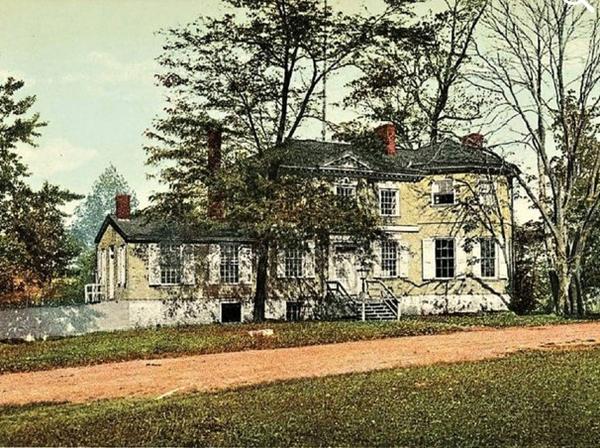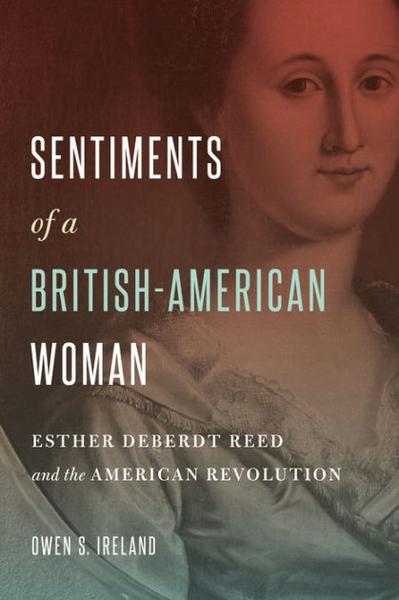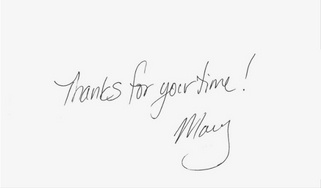September 19, 2025 Hello , Two hundred and thirty-eight years ago this week delegates at the Constitutional Convention in Philadelphia signed the constitution, birthing a new nation governed by We the People of the United States. One delegate, Benjamin Franklin, was asked whether this new government was a republic or a monarchy. "A republic, if you can keep it," replied Franklin. Two centuries later, the fight for democracy still lies before us, more critical than ever before in our lifetimes. Today's feature story comes from one of you, dear readers! Peggy Hartzell introduced me to Esther De Berdt Reed who organized women in Philadelphia to raise money to fund the Continental Army during the Revolutionary War. Esther is Peggy's 4th
great grandmother! An artist, Peggy created a piece to commemorate Esther and it's on display at the Sculpture Exhibit at Historic Laurel Hill Mansion in Philadelphia until October 17th. I'm thrilled to tell you Esther's story and feature Peggy's
art.
Esther Reed: A Feminist Colonial Patriot
Esther De
Berdt Reed originally hoped the colonies could reconcile with the British Crown. Born in London, she only moved to Pennsylvania in 1770, after meeting and falling in love with a Philadelphia lawyer.
Portrait of Esther de Berdt Reed, circa 1770s
She and
her husband Joseph Reed blamed arrogant British officials for the rising animosity in Boston and Philadelphia, but by 1774, they had lost patience with British contempt for Americans, the absolute uncontrolled power of Parliament and the tyranny of the mother country. Joseph was a successful attorney and the couple moved in Philadelphia's elite circles. Esther entertained a number of revolutionary leaders in her home, including...in the words of her biographer Owen S. Ireland... "...the most charismatic of them all, George Washington: well over 6 feet tall, a horseman, a dancer and eloquent "presence" with "an animal vitality" and "an air of power reigned in." Washington dined at Esther's table May 9,1775, where she joined the discussion of political and military matters. He stayed the night at the Reeds home and when he returned for dinner a month later, he asked Joseph to ride with him to New York. On the way he
persuaded Joseph to risk his life, the security and prosperity of his family and take up arms against his king. Joseph became an aide to Washington along with Alexander
Hamilton. Later he became a general in the Continental Army, and like other wives of the patriots, Esther stayed at home caring for her children. That was one reason,
Peggy Hartzell chose to honor Esther. "[I wanted] to celebrate strong women who paved the way while raising families during the
revolution. Esther DeBerdt Reed was pregnant and gave birth to a 4th child while organizing with other women to raise money to support the troops in the fight for Independence."
Peggy Hartzell's contribution to Philadelphia Sculptors' Timeline of American History Exhibit at Laurel
Hill Mansion, East Fairmount Park, Philadelphia. For her installation, Peggy chose cyanotype, a photographic printing process that produces blue
images using ferric salts and potassium ferricyanide. This in homage to an English botanist and photographer Anna Atkin, who used the medium in her early groundbreaking work as a woman in the field of biology in the 1830s. Peggy created cyanotype fabric flags featuring Esther and Laurel Hill Mansion, a historic pre-revolutionary house hosting the art exhibit and coincidentally, where Esther stayed for a summer during the war. Prior to that, in January 1780, Esther anonymously published a broadside declaring colonial women were equal to men in their patriotism.
"...if the weakness of our Constitution, if opinion and manners did not forbid us to march to glory by the same paths as the Men," Esther wrote, "we should at least equal, and sometimes surpass them in our love for the public good." Entitled Sentiments of an American Woman, Esther wrote that the ambition of revolutionary women was akin to heroines like Joan of Arc, who'd already proven to the universe that Philadelphia women would make good freedom fighters. "Born for liberty, disdaining to bear the irons of a tyrannic government, we associate ourselves... [with the] Batildas, the Elizabeths, the Maries, the Catharines, who have extended the empire of liberty, and contented to reign by sweetness and justice,
have broken the chains of slavery, forged by tyrants in the times of ignorance and barbarity." Esther went on to lay out an eight point plan for women to help
fund the war effort, entreating well-to-do women to give up their finery and luxuries and donate to the Continental Army. She assured poor women to give if they could
according to their means. "The shilling offered by the Widow or the young girl, will be received as well as the most considerable sums
presented by the Women who have the happiness to join to their patriotism, greater means to be useful." Sentiments of an American Woman launched the
Ladies’ Association of Philadelphia. The women went door to door and by July 4,1780 they raised over $7,000, almost $30,000 in today’s dollars. There's some disagreement
among historians about George Washington's response to the women's fundraising.
"Washington's Headquarters" (Yorktown) - painting by Sidney King (National Park
Service) Some say Esther wanted to give the money directly to the soldiers, but Washington suspected it would be wasted on alcohol. He told Esther it was up to
her what she did with the money, but suggested she use the funds to buy cloth and sew shirts for the army men. Another source asserts Washington would not allow women to move beyond their domestic roles and ordered them to use the money for cloth and sew the shirts. Either way, linen was purchased and now our story weaves history and the current moment. Esther took her portion of cloth and left the city to escape the summer heat and disease. She moved with her children to Laurel Hill located on a high bluff along the Schuylkill River.
Laurel Hill Mansion is a historic pre-revolutionary house in East Fairmount Park,
Philadelphia. Nature and the river view boosted Esther's resilience and offered her comfort as she busied her hands sewing shirts for the troops and penning letters to her husband off at war. Peggy designed her cyanotype fabric flags to hang in the trees on the Laurel Hill property and connect a sense of place with a visceral appreciation for the restorative effects of nature especially in today's trying times. Laurel Hill Mansion sits on lands that were for millennia inhabited by the Lenni Lenape until they were acquired by William Penn in 1682. According to Peggy, William Penn had the intention that the land would welcome people of
all faiths. Some three hundred years later we can remind ourselves that “We the People” is a work in progress," Peggy says. "We
honor our founding mothers and the rights of women. We honor the original people who lived on this land for thousands of years respecting the rights of the land, waters and all living things including the trees, plants, animals, insects and birds." That summer of 1780, the Ladies’ Association of Philadelphia made 2,200 shirts for the Continental troops. Women in Maryland, New Jersey, and Virginia followed Esther's example and organized their own efforts military relief. Unfortunately, Esther did not live to see the end of the war, nor the birth of a new nation conceived in liberty and dedicated to the proposition that all men are created equal. She returned to the city at the end of August to see her husband General Joseph Reed and there she contracted dysentery, a sickness that fell many a Continental soldier. "Her constitution enfeebled by her recent confinement sank under an attack of acute disease and she breathed her last, her husband, her aged mother and children the eldest being 8 years of age [around her]." Esther died September 18th, 1780. She was 34. According to an account written published in 1850 by a relative, all classes of society testified respect for Ester's memory. George Washington knew her well and left on record his expression of respectful sorrow.
Like my article today? Forward this email to share with family and friends.
At the time of her death in 1780, British-born Esther De Berdt Reed--a name few know today--was one of the most politically important women in Revolutionary America. Read her
biography Sentiments of a British-American Woman by Owen S. Ireland.
From the publisher: DeBerdt Reed's social connections and political sophistication helped transform her husband, Joseph Reed, from a military leader into the president of the Supreme
Executive Council of Pennsylvania, a position analogous to the modern office of governor. DeBerdt Reed's life yields remarkable insight into the scope of women's political
influence in an age ruled by the strict social norms structured by religion and motherhood
Follow me on social media
This newsletter is a reader-supported publication. To support my work, consider becoming a paid subscriber.
Read
a great book? Have a burning question? Let me know. If you know someone who might enjoy my newsletter or books, please forward this e-mail. I will never spam you or sell your email address, you can unsubscribe anytime at the link below. To find out more about my books, how I help students, teachers, librarians and writers visit my website at www.MaryCronkFarrell.com. Contact me at MaryCronkFarrell@gmail.com. Click here to subscribe to this newsletter. |
|
|

